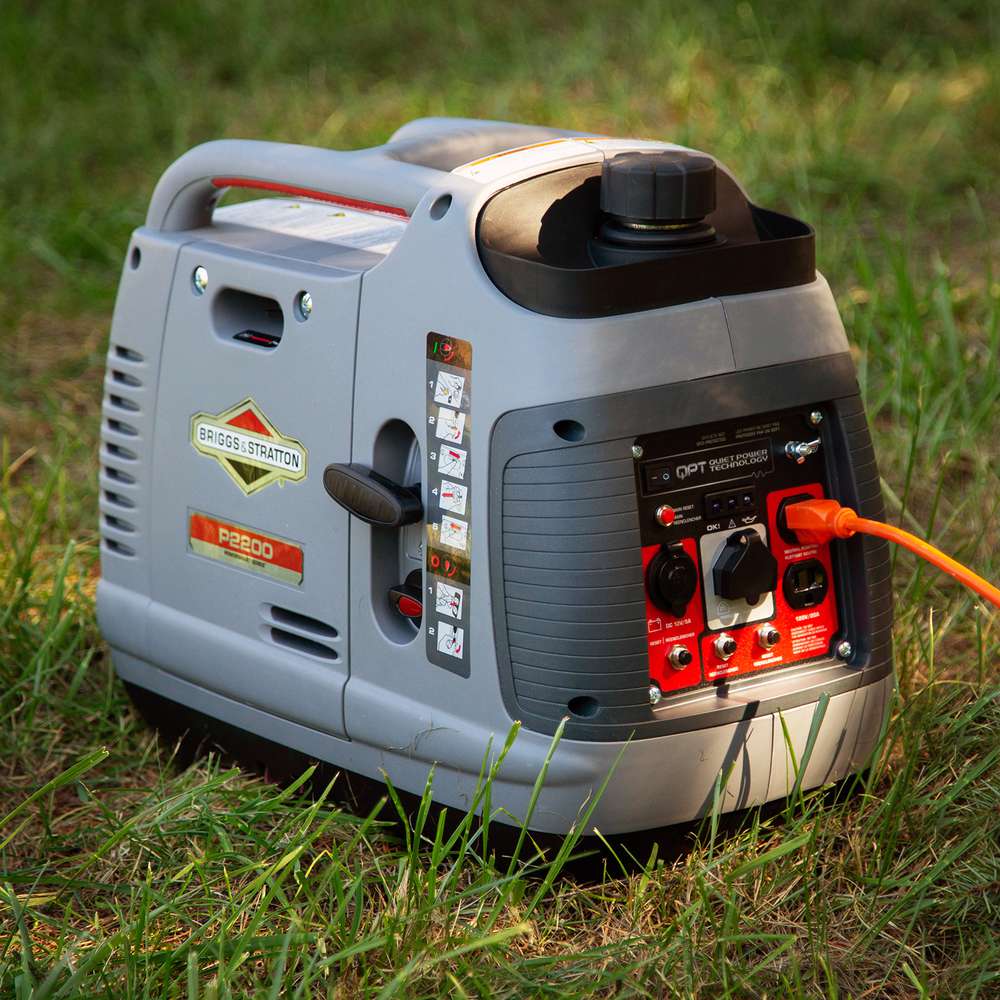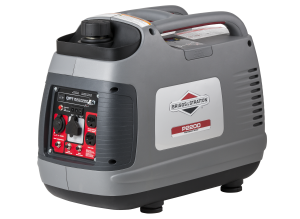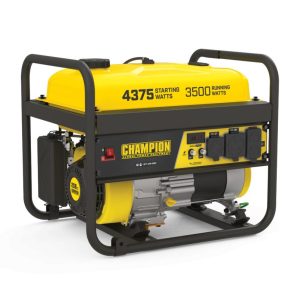Briggs and Stratton Generator Won’t Start (Troubleshoot)
When you can’t plug into the grid, you turn to a generator. Keep one of these on hand as a backup plan for case the power goes out or when you’re far from civilization.
If it fails to remain on, you will need to figure out why and fix it before you can use it to operate the devices you need.
When there isn’t enough air or fuel getting to the engine, when the low oil sensor is activated, or when the generator is overworked, a Briggs & Stratton will shut off and restart repeatedly.
Possible causes include a clogged fuel vent, low oil level, a filthy carburetor, an incorrectly adjusted choke, an overloaded generator, or a dirty air filter.
Take care to disconnect the wire from the spark plug and let the generator cool down before attempting any maintenance. Be sure to take the extra safety measures outlined in the Briggs & Stratton handbook.

When troubleshooting, repairing, or using a piece of equipment, be sure to first read and follow any safety recommendations found in the handbook. If you don’t feel confident in your ability to conduct the repair safely due to a lack of experience, training, or health, it’s best to call in an expert.
Table of Contents
Briggs & Stratton Generator Won’t Stay On for These 6 Reasons
1. Briggs & Stratton Generator Cannot Handle the Current Demand
Every Briggs & Stratton product has a maximum power it can handle. This is the maximum load the generator can handle, and it will shut down if you try to power any more.
Determine the maximum load that may be placed on the generator. The generator’s load capacity is usually shown on its outside.
Also, a minimum requirement could be included. The maximum starting wattage is the maximum amount of electricity that the generator can supply momentarily in order to kick-start an appliance. After a while, the generator will break under the strain of that restriction.
After that, total up the power consumption of everything you plan on utilizing the generator for simultaneously. The total amount of power drawn by the appliances cannot exceed the generator’s rated capacity.
To figure out the wattage, consider these guidelines:
- Most electrical equipment will have a label with the wattage listed on it.
- In order to get some motors going, you may need to supply more power than usual. When figuring out how much power you’ll need, utilize the device’s initial wattage.
- To get a total, add up the wattage of everything that will be hooked into the generator all at once.
- The sum of these watts must be lower than the generator’s maximum safe operating wattage.
2. Trouble with the Briggs & Stratton Generator Due to a Dearth of Air
Low-Quality Air Filter
In order to keep on operating, the engine need oxygen-rich air. Not cleaning or replacing the filter on a regular basis might cause it to get so clogged with dirt that not enough air can travel through.
The generator might stop working due to a shortage of oxygen.
It’s time to check the filter’s condition, so take it out. If the filter is broken or very unclean, you should get a new one. Purge the dirt if it’s otherwise in fine shape but looks sloppy.
Please find below detailed instructions on how to clean a foam filter. Check your owner’s handbook if you don’t know what kind of filter you have.
Purge the FOAM from a generator’s air filter made by Briggs & Stratton
- Take out the filter and throw it away.
- Make sure the air filter housing and cover are clean by wiping them down. Keep the air filter free of dust and debris.
- Verify the condition of the foam filter, and replace it if necessary.
- Cleaning the filter with soapy water and rinsing it until the water flows clear will determine its condition.
- The filter must be squeezed and then let to dry.
- If your foam filter calls for oil, make sure it’s completely submerged in clean motor oil. Then, press the filter to drain the extra oil from the engine. No one wants oil leaking off of it.
- Replace the filter in the ventilation system.
- The air filter cover must be reattached.
Improper Choke Adjustment
When starting a cold engine, you should utilize the choke to limit airflow. For the engine to keep running after warming up, the choke must be turned off.
It’s possible that the engine’s abrupt shutdown after starting is the result of a choke that wasn’t properly adjusted or that got stuck in the closed position. Make that the choke is in the right position, which is closed when the engine is cold and open when it is heated.
3. Briggs & Stratton Generator Runs Out of Gas
No Gas in the Tank
This is the most obvious cause of a generator shutting down, although it still happens sometimes. Alternatively, a faulty fuel gauge or gasoline leak might be to blame.
Refuel the vehicle with new gas. If you discover any gasoline leaks or a malfunctioning fuel gauge, you should fix them immediately.
Clogged Carburetor
When gasoline and air are combined, combustion occurs. The carburetor controls how much fuel and air are combined. Over time, the carburetor might get coated with old gas, preventing it from doing its job and supplying the engine with the fuel it needs to keep operating.
In such a case, the carburetor must be disconnected from the generator and cleaned with carburetor cleaning to get rid of the crusty buildup caused by stale gasoline. For proper reassembly, I think that photographing each step of carburetor disassembly is the most helpful method.
Get a new carburetor if you don’t want to clean the old one or if you’re unsuccessful at doing so.
Vent in Fuel Tank Blocked
Most Briggs & Stratton power plants have a fuel cap with a vent or an external vent on top of the fuel tank. When the vent becomes blocked, air cannot escape from the tank to maintain a constant pressure within.
When the gasoline tank can’t vent, a vacuum creates, preventing fuel from reaching the carburetor. In some cases, this can stop the generator from functioning.
It’s possible that the vent is to blame when tightening the gas cap prevents air from entering the tank and restarting the generator.
4. Not Enough Pitch in the Briggs & Stratton Motor
Unreliable Spark Plug
A poor running or dead engine might be the result of a spark plug that is fouled. However, this issue can also be brought on by spark plug wires that are too loose or an improper electrode spacing.
Use a wire brush to clean a filthy spark plug. But if you check the spark plug and see that it’s broken, worn, or a particularly dark color, you’ll need to get a new one.
Poor Quality Ignition Coil
When the generator becomes hot, the ignition coil might peel off and cause a short. Because of this, the spark plug won’t obtain the voltage it requires to produce a spark.
Start by checking the condition of the spark plug. You should then use an ohmmeter to verify that there is no break in the circuit. If you notice a discontinuity, make sure to fix it.
5. Briggs & Stratton Oil Level Too Low to Run the Generator
Briggs & Stratton power tools will automatically turn off to prevent harm to the motor when the oil becomes too low. Always check the oil level with the generator sitting on a flat, level surface.
The oil cover comes with a dipstick you may use to inspect the oil level. When the dipstick indicates that the oil level is low, add more oil until it reaches the proper level.
If the engine oil level is right but the low oil sensor light persists, a defective sensor may be to blame.
6. Briggs & Stratton Generator with a Blocked Spark Arrestor
When a muffler is installed, a spark arrestor screen is used to avoid burns and fires from the hot exhaust material that may otherwise shoot out of the muffler.
A clogged spark arrestor screen causes the engine to sputter and perhaps shut down because the hot exhaust air cannot escape.
Spark arrestor screens may be cleaned using a solvent and a tiny metal brush by removing them and cleaning them. A replacement screen must be installed if the old one is broken or has holes in it.
Read More: Briggs & Stratton Generator







